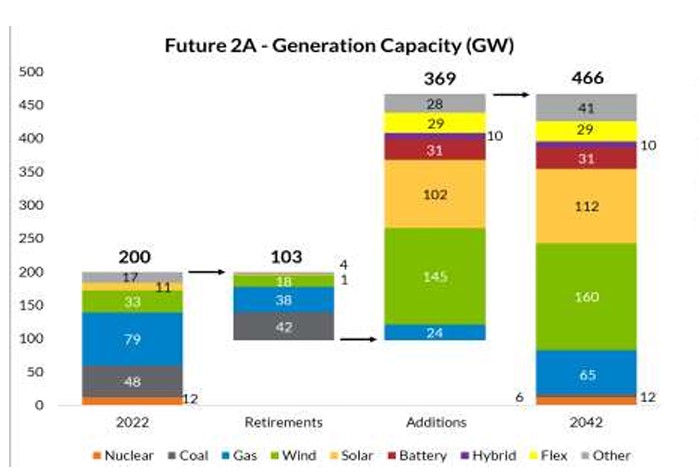Minnesota grid operator now estimates wind and solar transmission costs will be $27-$33 billion
In 2022, the Midcontinent Independent Systems Operator (MISO), the regional grid operator that oversees Minnesota’s electric grid, released a report stating that $10.3 billion would be needed to build the first “tranche” of transmission lines necessary to facilitate the closure of coal plants and the addition of massive quantities of wind and solar.
Now, MISO estimates an additional $17-$23 billion in transmission will be needed for “Tranche 2.”
It’s important to keep in mind that this transmission buildout would be unnecessary if not for the ill-conceived shift away from reliable coal and natural gas plants toward unreliable wind and solar generators. According to Utility Dive:
MISO’s initial $17 billion to $23 billion Tranche 2 plan is designed to handle what the grid operator expects its system will look like in 2042 under a scenario called Future 2A found in its most recent Futures Report. The scenario is based on utility resource plans and state energy goals.
Under that scenario, MISO expects it will see 369 GW in generator additions, 103 GW of power plant retirements and a 96% cut in carbon emissions by 2042. It expects its net peak load will grow to 145 gigawatts (GW) in that year — up from a record peak of 127 GW in 2011 — and wind, solar and energy storage will provide about 83% of its electricity.
Without the proposed transmission, those changes would lead to overloads and generator curtailments across its Midwest region, according to a presentation set to be discussed at a March 15 LRTP workshop. MISO also expects it will need to be able to transfer power between its Eastern and Western regions.
This is a massive amount of replacement capacity for the unnecessary retirement of the thermal fleet. The MISO Futures Report shows that peak demand for the region is expected to increase to 145 GW in 2042 under the Future 2A scenario, and meeting this demand will require a massive overbuilding of generation capacity.
The graph below from the report shows that as of 2022, MISO had 139 GW of coal, nuclear, and natural gas capacity, which is almost enough to meet its projected peak demand in 2042.
However, bad energy policies enacted by states and utility green plating schemes mean virtually all of the coal fleet will be retired by 2042, and we will see a decline in natural gas capacity and an explosion in wind and solar capacity, with wind experiencing a nearly five-fold expansion in the next 18 years and solar growing ten-fold.

Now, the grid will grow by a factor of 2.3 to accommodate a modest increase in projected peak demand. This massive expansion is what is driving the need for new transmission lines and the $27-$33 billion price tag associated with them.
We would not need this massive amount of new transmission spending if we were building new nuclear power plants because these plants can be sited at or near existing coal plants, and their high reliability means we would not need to overbuild the grid in remote places to wheel the power around the country. This is ultimately why our research has repeatedly shown that nuclear power would be a much more affordable way to reduce emissions.